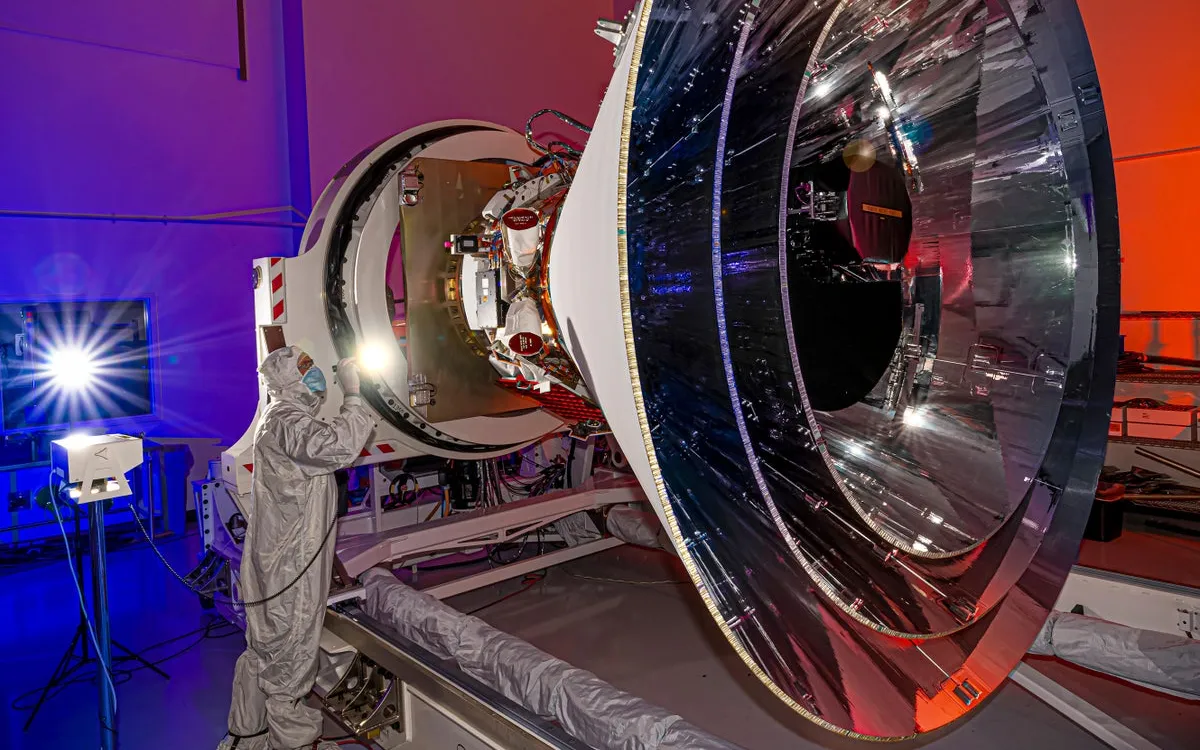
NASA is on the brink of launching a revolutionary space telescope designed to explore the universe in unprecedented detail. The mission, known as the Spectro-Photometer for the History of the Universe, Epoch of Reionization and Ices Explorer (SPHEREx), is slated for launch no earlier than March 2 at 10:09 P.M. EST from California’s Vandenberg Space Force Base. With a budget of $488 million, the SPHEREx mission aims to delve into the complexities of cosmology, focusing on the earliest moments of the universe's history and generating an expansive dataset that could significantly impact the field of astronomy.
SPHEREx stands out from traditional astronomical surveys, which typically cover wide fields of view but analyze only a limited range of wavelengths. While other telescopes, like the James Webb Space Telescope, can break light into multiple wavelengths, they often focus on specific objects, limiting their observational scope. In contrast, SPHEREx will survey the entire sky through over 100 different infrared light “colors”, akin to a color printer that splits an image into distinct layers of color. This innovative approach will allow scientists to map the universe in a groundbreaking manner.
The SPHEREx mission is designed with three key science objectives that encompass a wide range of cosmic phenomena. First, it will conduct a thorough mapping of various ices found within our Milky Way and its neighboring galaxies. This includes identifying water ice, frozen carbon dioxide, methanol, and ammonia. Each substance has a unique molecular signature, which SPHEREx will capture with remarkable clarity, dramatically increasing the number of spectral measurements of these ices from about 200 to an anticipated eight million.
The second objective focuses on examining the universe's history of light production. As the universe expands, light emitted from distant sources undergoes a process known as redshifting, which stretches its wavelength and shifts it into the infrared spectrum. This transformation enables astronomers to gauge the distance of celestial objects and understand how the universe's total light output has evolved over time. By analyzing light from around 450 million galaxies, SPHEREx aims to unveil the faint signals of light emitted throughout cosmic history, contributing to a comprehensive understanding of the universe's evolution.
The final objective of the SPHEREx mission is to investigate the phenomenon of cosmic inflation, which theorizes that the universe experienced a rapid expansion shortly after the big bang. This event is pivotal in understanding the early universe, yet it remains challenging to study due to the extreme conditions involved. Through its extensive galaxy survey, SPHEREx will help scientists identify patterns in galaxy distributions that correlate with various inflationary models, thereby enhancing our knowledge of the universe's origins.
In addition to its primary objectives, SPHEREx will also contribute to a broader understanding of various astronomical phenomena, including planets, asteroids, and comets. The telescope is set to conduct multiple surveys of the sky, making it a valuable asset for identifying transient events such as supernovae. As Olivier Doré, a cosmologist at NASA’s Jet Propulsion Laboratory (JPL), aptly puts it, “It’s really a discovery machine.”
Moreover, during its launch, SPHEREx will be accompanied by another NASA mission, the Polarimeter to Unify the Corona and Heliosphere (PUNCH). This mission consists of four small satellites designed to study the sun's outer atmosphere and its influence on the solar wind, further enriching our understanding of cosmic interactions.
As the SPHEREx mission prepares for launch, it promises to unveil new insights into the universe's history, the formation of celestial bodies, and the fundamental processes that govern cosmic evolution. With its innovative approach and ambitious goals, SPHEREx is set to become a cornerstone of modern astronomy.